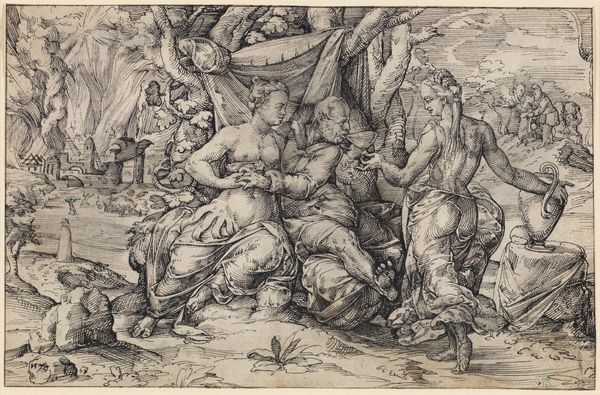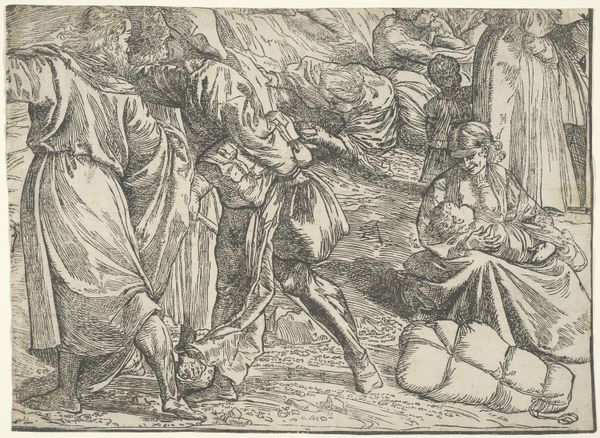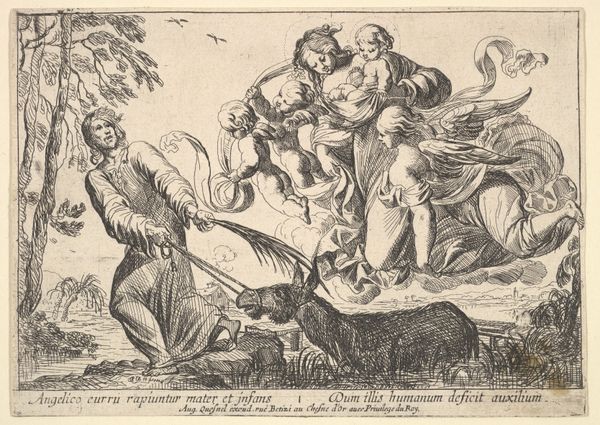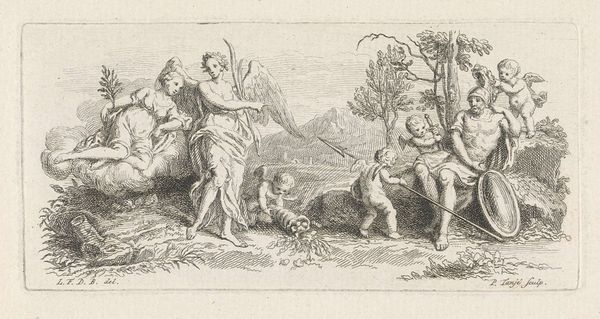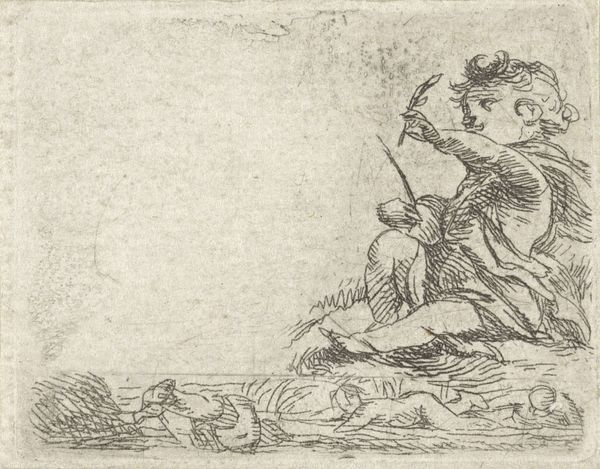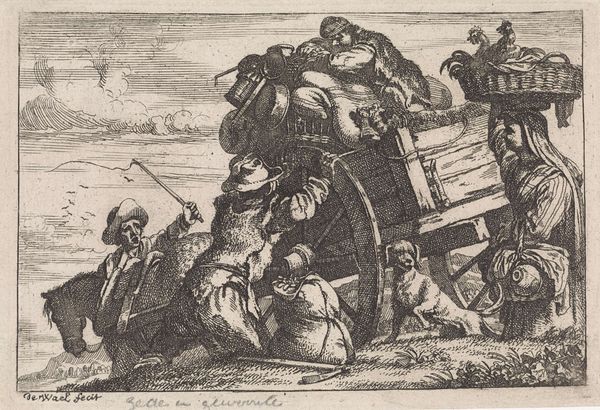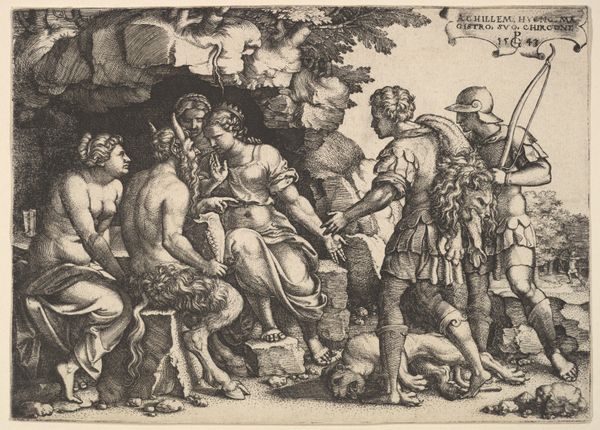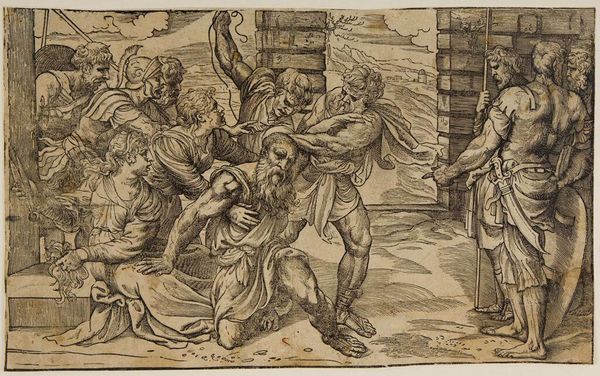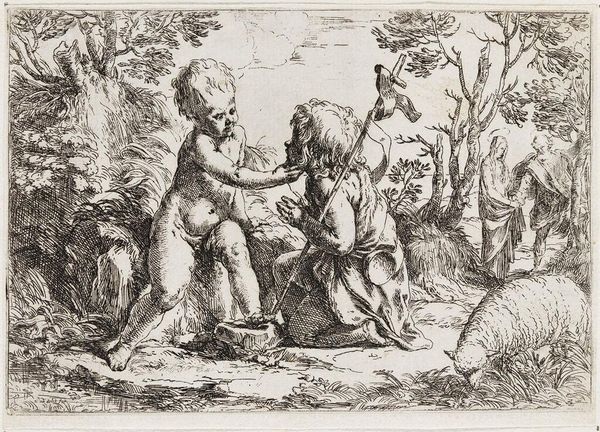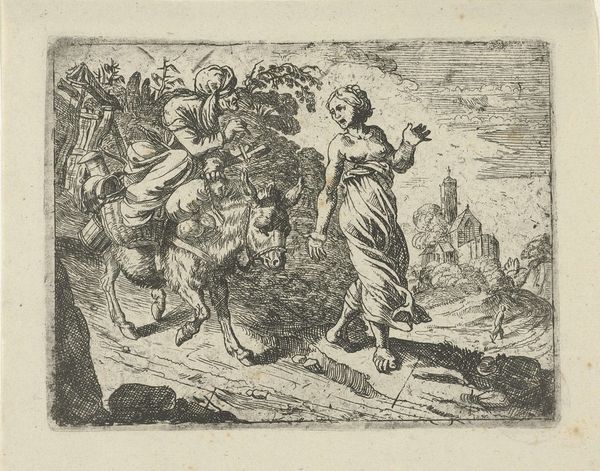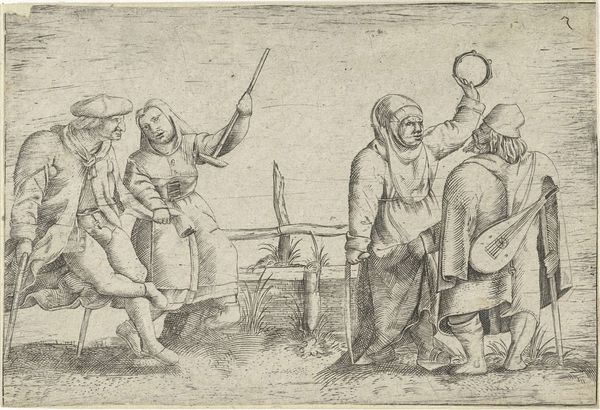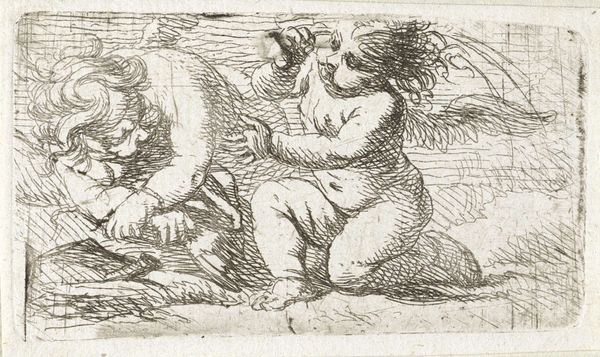
engraving
#
portrait
#
baroque
#
figuration
#
genre-painting
#
engraving
Dimensions: height 140 mm, width 228 mm
Copyright: Rijks Museum: Open Domain
Editor: This engraving, "Vijf drinkebroers," or "Five Drinkers," by Johann Liss, dating from sometime between 1600 and 1629, really captures a specific mood, almost a grotesque revelry. What do you see in this piece, especially considering the period in which it was created? Curator: Well, at first glance, we see a scene of apparent joviality, but through a contemporary lens, this piece can trigger discussions about socio-economic factors and power structures, the male gaze, class, and the normalization of intoxication, and the social impact of overindulgence in the 17th century. Does this resonate with your interpretation of it? Editor: I hadn't thought about the deeper societal implications. I was mainly focused on the individuals depicted. Curator: Exactly. Genre paintings, particularly during the Baroque period, often served multiple purposes. They depicted everyday life, yes, but they also carried moral or social commentaries. In this context, consider how the 'drunkenness' portrayed might reflect anxieties around social order, the abuse of privilege, or even implicit criticisms of those in power. Also, note the active participant compared to the one being helped. Does that relationship tell you something? Editor: So, beyond just showing a group of men drinking, it's potentially a critique of social dynamics and maybe a warning about the consequences of unchecked behavior. Curator: Precisely! And even about who pays the highest price when they behave with impropriety or overindulgence. Think about whose story has been told, who benefits and what behaviors this depicts. Recognizing these nuances provides us the opportunity to bridge art historical interpretations with modern discussions around privilege, responsibility, and the representation of marginalized communities. What will you take away from that perspective? Editor: That I can bring modern ideas of social structure into play when I see older pieces. Thank you. Curator: Absolutely, critical evaluation empowers our analysis.
Comments
No comments
Be the first to comment and join the conversation on the ultimate creative platform.
